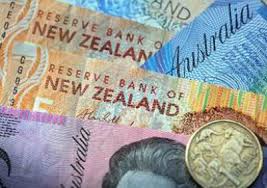By Mariko Ishikawa - Oct 5, 2012 10:29 AM GMT+0400
 The currencies maintained yesterday’s advances against the yen after the Bank of Japan (8301)kept its asset-purchase program unchanged. Gains by the so-called Aussie dollar were limited after a report showed construction shrank by the most in a year, adding to signs of economic weakness that may prompt the Australian central bank reduce borrowing costs further.
The currencies maintained yesterday’s advances against the yen after the Bank of Japan (8301)kept its asset-purchase program unchanged. Gains by the so-called Aussie dollar were limited after a report showed construction shrank by the most in a year, adding to signs of economic weakness that may prompt the Australian central bank reduce borrowing costs further.
The Australian and New Zealand dollars trimmed weekly losses as stocks rallied globally, boosting demand for riskier assets.
“There’s a more positive sentiment overall after stocks went higher” helping buoy the Australian dollar, said Lee Wai Tuck, currency strategist at Forecast Pte in Singapore.
The Aussie climbed 0.2 percent to $1.0265 as of 4:22 p.m. in Sydney, trimming its weekly decline to 1.1 percent. That’s still the biggest slide since the five days ended Aug. 17. New Zealand’s currency, nicknamed the kiwi, gained 0.3 percent to 82.46 U.S. cents, set for a 0.7 percent five-day loss. The Aussie gained 0.1 percent to 80.45 yen and the kiwi rose 0.2 percent to 64.64 yen.
The yield on Australia’s 10-year debt rose seven basis points, or 0.07 percentage point, to 3.05 percent. New Zealand’s two-year swap rate, a fixed payment made to receive floating rates, was little changed at 2.64 percent.
The MSCI Asia Pacific Index (MXAP) of stocks added 0.4 percent following yesterday’s 0.8 percent advance in the MSCI World Index. (MXWO)
BOJ Policy
Japan’s central bank said today that it would maintain the size of its asset-purchase fund at 55 trillion yen ($702 billion) and keep its credit-lending program at 25 trillion yen. Policy makers left the key overnight rate unchanged at zero to 0.1 percent at the meeting, which was attended by Economy Minister Seiji Maehara, the first minister to do so for over nine years. Maehara said he went to the BOJ to express his concern about yen appreciation and prolonged deflation.
Demand for the Aussie was limited as swaps indicate a 88 percent chance the Reserve Bank of Australia will lower its key interest rate by 25 basis points at its next meeting on Nov. 6, according to data compiled by Bloomberg. Eighteen out of 24 economists surveyed by Bloomberg expect a quarter percentage point cut at next month’s meeting, while the remaining six expect no change.
Citigroup Inc. cut its forecast for the RBA’s cash-rate target and now expects it to be 2.75 percent in the first quarter of 2013. The company previously estimated the rate would stay unchanged at 3.25 percent.
Slowdown Signs
The Australian Industry Group and the Housing Industry Association said today their construction performance index fell to 30.9 last month from 32.2 in August. A reading below 50 represents a contraction.
The report followed figures yesterday that showed retail sales grew more slowly than economists estimated. Other releases in the past month have revealed the widest trade deficit in four years and a drop in business confidence. The RBA lowered its benchmark rate to 3.25 percent on Oct. 2.
“The Australian dollar should weaken in the weeks ahead,” said Andrew Salter, a strategist in Sydney at Australia & New Zealand Banking Group Ltd. (ANZ) “That’s reflecting the domestic fundamentals in Australia. We expect another rate cut in November.”
To contact the reporter on this story: Mariko Ishikawa in Tokyo at mishikawa9@bloomberg.net
To contact the editor responsible for this story: Rocky Swift at rswift5@bloomberg.net